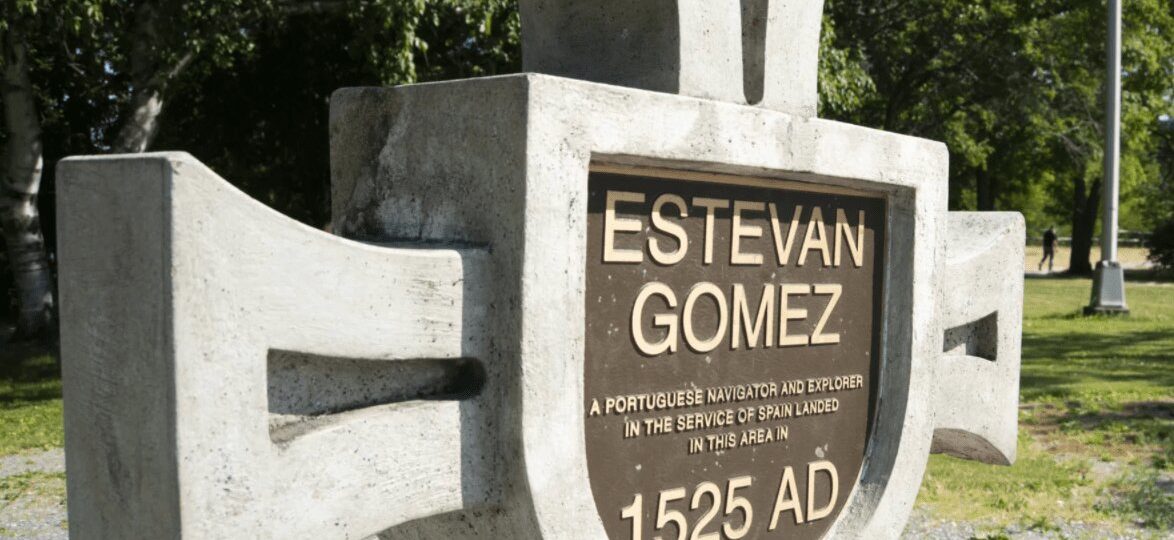Bangor council votes to remove monument to Portuguese explorer Estevan Gomez
The Bangor City Council unanimously voted on last week to remove the monument to 16th-century Portuguese explorer Estevan Gomez, located in a park on the Bangor Waterfront.
The cross-shaped monument will be removed in the coming weeks, and will be displayed at the Bangor Historical Society, with language detailing the historical and cultural context of Gomez’s expedition. The remaining pedestal and patio, located near the intersection of Washington and Broad streets, will be demolished.
The monument was erected in 1999, gifted to the city of Bangor by a group of Portuguese Americans from New Bedford, Massachusetts. Earlier this year, the Penobscot Nation sent a proposal to the city to remove the concrete cross and associated patio, citing Gomez’s history as an oppressor and enslaver of Indigenous people in New England. The city took it up amid nationwide protests against racism and police violence following the late May killing of an unarmed Black man by Minneapolis police officers.
Gomez was reportedly the first European to travel up the Penobscot River in 1525. After visiting the area that several centuries later would become Bangor, Gomez sailed south, later reportedly abducting around 50 Indigenous people in what is now Rhode Island or Connecticut, and sailing back to Europe with them, with plans to sell them into slavery.
Maulian Dana, tribal ambassador for the Penobscot Nation, said in June that while she understood that some people would not understand why the city would remove such a monument, she felt that its continued existence fundamentally disrespected Maine’s Indigenous peole. Despite a few critics, there was little pushback from the community on the monument’s removal.
Bangor’s Commission on Cultural Development over the summer undertook an extensive outreach and research project to gauge public sentiment as well as explore the logistics of removing the monument. Liam Riordan, a University of Maine history professor who sits on the commission, said he hopes this is just the beginning of a larger conversation about how history is talked about in the public sphere, and that any potential monument or public art that might replace the Gomez monument would take that into consideration.


